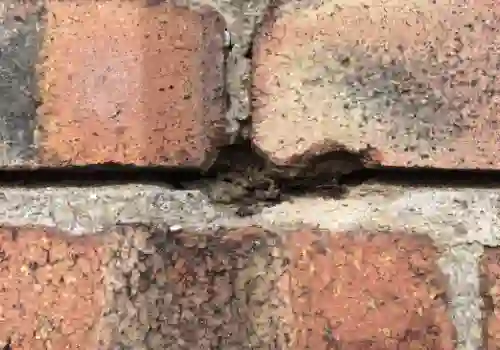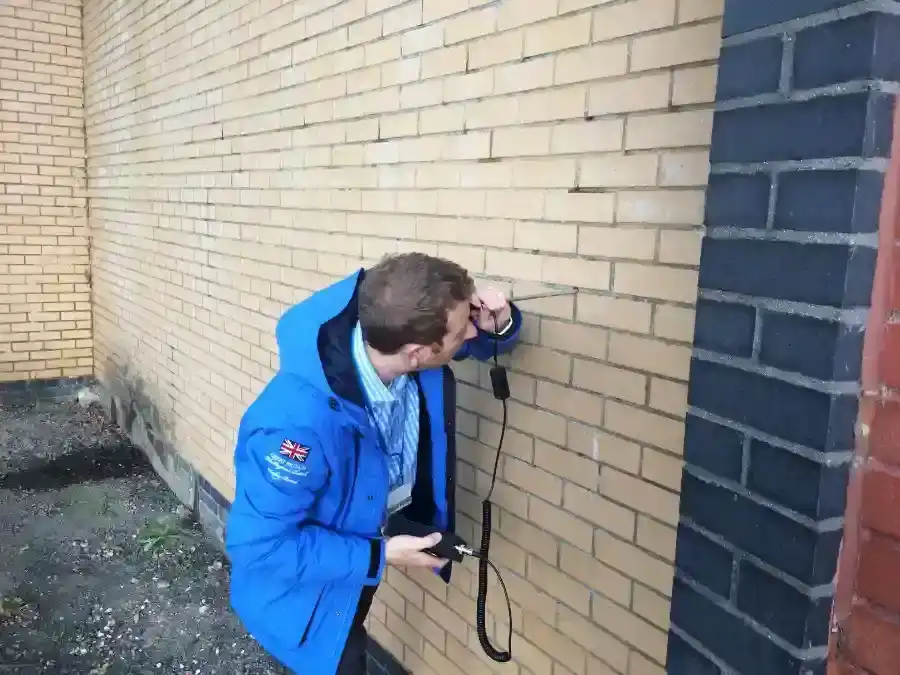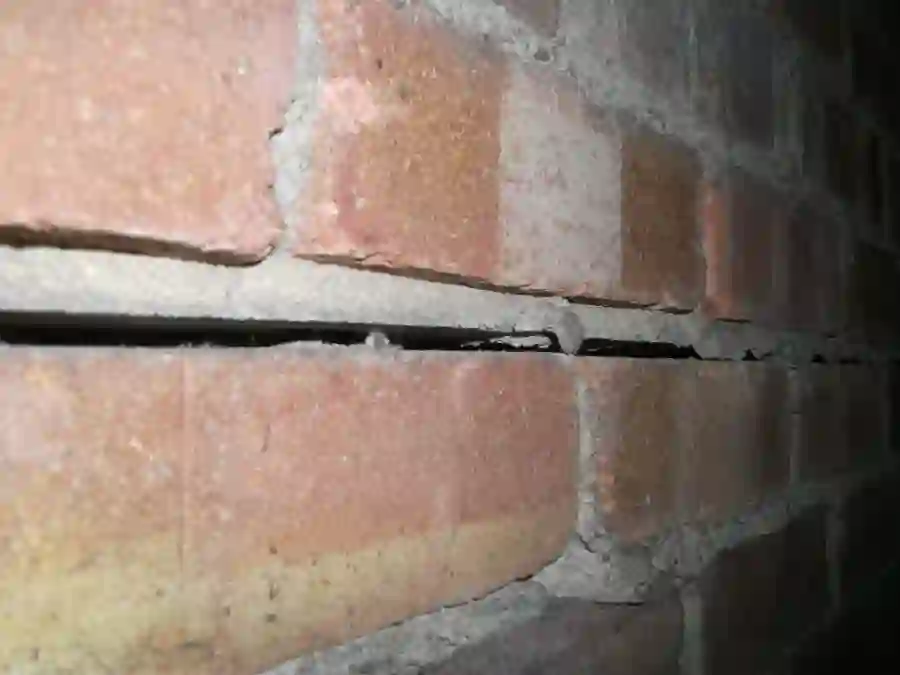01482 659522 07950 415223 douglas@jaramassociates.co.uk
Expert Assessments of Wall Tie Failure
Cavity wall tie failure (CWTF) is a structural issue that arises in cavity walls, which are made up of two separate brick skins with a gap/cavity in between. Cavity walls, introduced widely from the 1920s and 1950s, rely on these ties for structural stability. However, over time, factors like poor moisture ingress, and lack of protective coatings can lead to their failure. Early examples had little or no corrosion resistance and moisture in the outer leaf. Corroded wall ties expand as they rust, which puts pressure on the surrounding brickwork. This results in horizontal cracking, bulging walls, and potentially serious structural issues if left unchecked.

The causes of wall tie failure are often linked to environmental conditions and the materials used during construction. The primary causes include:
Before the 1980s, many wall ties were made from mild steel with little or no corrosion protection. Over time, exposure to moisture and oxygen causes these ties to corrode, weakening their structural integrity. The expansion caused by the corrosion pushes apart the masonry, leading to cracking or bulging in the walls.
For a more thorough assessment, we offer a comprehensive sulphate attack testing service. This involves taking concrete samples from the property and sending them to a laboratory for detailed analysis. We provide a full report, including the lab results. Testing options include:
Before the 1980s, many wall ties were made from mild steel with little or no corrosion protection. Over time, exposure to moisture and oxygen causes these ties to corrode, weakening their structural integrity. The expansion caused by the corrosion pushes apart the masonry, leading to cracking or bulging in the walls.
Moisture penetration is a leading cause of wall tie failure. Water can seep into the outer leaf of the brickwork through damaged mortar joints, cracks, porous bricks or mortar. Once inside, it can accelerate the corrosion process, particularly in poorly coated or wall ties on exposed walls.
The addition of retrofit cavity wall insulation can sometimes inadvertently contribute to wall tie failure. Insulation materials can absorb or trap moisture within the cavity, keeping the wall ties wet for extended periods and increasing the rate of corrosion. Poorly installed or unsuitable insulation materials exacerbate the problem.
Older properties are inherently more susceptible to wall tie failure due to prolonged exposure to the elements and the type of ties used in the original construction.
If you notice cracking or wall tie movement, it doesn’t necessarily mean your property is at immediate risk. However, addressing the issue promptly is crucial to preventing any further damage.
At Jaram Associates, we provide expert inspections and thorough investigations to identify wall tie failure. To effectively assess for cracking, we use a combination of methods including:


The investigation approach we recommend will depend on the extent of the wall tie failure and conditions of the property. While methods such as using borescopes and endoscopes are often sufficient to assess the situation, properties with retrofit cavity insulation may require more direct investigation. In these cases, removing a brick to expose the wall tie may be necessary for an accurate diagnosis.
Wall ties connect two leaves of brickwork together and are a structural component of the property. The purpose of wall ties joins the cavity wall together and maintains the structural integrity of the property. Over time, wall ties can corrode, leading to structural issues. This is why regular inspection and maintenance of wall ties is crucial, particularly in older properties.
Yes, wall tie failure can cause damage to the rest of the property. This is because the expansion can lead to cracking and distortion, which compromises the structural integrity of the walls. Spotting the signs of wall tie failure early is crucial, as it prevents the problem from escalating into a more serious structural damage. If left untreated, this process could eventually lead to the external leaf of the wall collapsing.
In general, modern wall ties are considered an improvement over older designs. However, it depends on the age, material, and type of the original ties. Modern wall ties are typically manufactured with corrosion-resistant materials. As with most building components, the performance of wall ties completely depends on the environment, installation, quality and maintenance.
The necessity of a survey can depend on several factors and often requires professional assessment. While some valuation surveyors recommend surveys as a precautionary measure, this approach may not always be necessary. The decision should take into account the age of the property, its exposure to environmental factors, and any signs of past repairs, such as evidence of repointing, which could indicate an attempt to conceal underlying issues. Seeking advice from an independent surveyor such as Jaram Associates can help determine whether a survey is truly needed in your specific case.

Jaram Associates is an RICS registered firm of Chartered Building Surveyors formed in 2014

News
Jaram Associates are once again pleased to work with Wykeland Property
Design and Project Management | Wyke Sixth Form College
Project Management - Beverley
Contact Us
Jaram Associates
5 Valley Drive
Kirkella
East Yorkshire
HU10 7PG
Tel: 01482 659522
Contact Us
Jaram Associates
Mobile: 07950 415223
Tel: 01482 659522
douglas@jaramassociates.co.uk
Copyright © 2025 Jaram Associates. All Rights Reserved. Web Design Hull